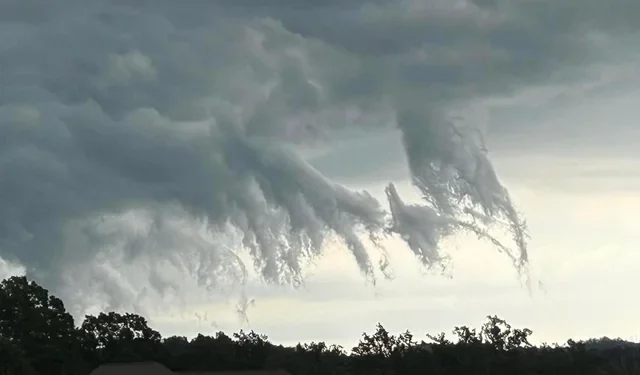(LOOTPRESS) – Scud clouds, an often misunderstood and misidentified weather phenomenon, have intrigued meteorologists and skywatchers alike. These low, ragged clouds, typically seen beneath storm systems, are harmless but are sometimes mistaken for more ominous formations, such as tornadoes or funnel clouds.
What Are Scud Clouds?
Scud clouds, scientifically referred to as “stratus fractus,” are irregular, fragmented pieces of cloud found near the base of storm clouds or along cold fronts. They are usually formed when cooler, moist air rises and condenses, often influenced by downdrafts or turbulence within a storm system.
Though scud clouds can appear dark and menacing, they are non-rotational and lack the violent dynamics of tornadoes. Instead, they drift aimlessly, pushed by storm winds, and can even evaporate quickly depending on changing weather conditions.
Why the Confusion?
Their disorganized and chaotic appearance often leads to misinterpretation, particularly during severe weather events. Observers may report scud clouds as funnel clouds or tornadoes due to their proximity to storms and their rapid movements. This can result in unnecessary panic and false alarm reports to weather services.
“Tornadoes are rotational systems, whereas scud clouds are not,” explains Dr. Clara Martinez, a meteorologist specializing in severe storms. “Understanding the difference is crucial, especially when issuing warnings during severe weather.”
A Key Indicator in Storm Development
While scud clouds are not dangerous on their own, they can serve as visual indicators of a storm’s intensity. Their formation often points to moisture-rich air being pulled into the storm system, which could indicate heavy rainfall or gusty winds nearby.
Tips for Identification
Experts recommend observing the motion and structure of the cloud. Tornadoes exhibit a spinning motion and maintain a more cohesive structure, while scud clouds lack rotation and appear ragged or disconnected from the main storm.
A Call for Awareness
Meteorologists emphasize the importance of public education to reduce misdiagnoses of scud clouds. Increased awareness can help weather services focus resources on genuine threats while reducing unnecessary panic.
Scud clouds may seem dramatic, but their role in the meteorological tapestry is benign. Understanding these formations is a small but significant step toward improving storm preparedness and response.










